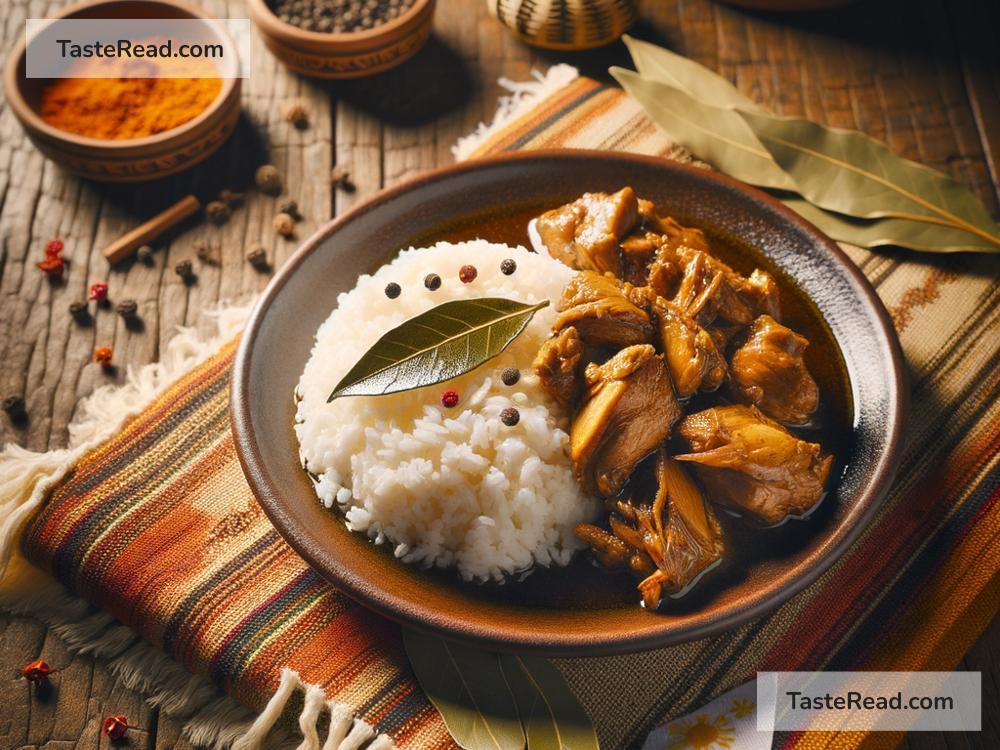Philippine Adobo: A Dish Full of Flavor and National Pride
Food is more than just a need; it’s a connection to culture, history, and community. In the Philippines, one dish stands out as a symbol of love for home and tradition: adobo. Simple yet flavorful, adobo has become a national treasure that Filipinos hold close to their hearts. Let’s dive into the world of adobo, exploring its rich flavors, its significance to Filipino identity, and why it holds a special place in the country’s cultural heritage.
What is Adobo?
Adobo is a famous Filipino dish, loved by locals and admired by tourists. At its simplest, adobo is meat—commonly chicken, pork, or sometimes seafood—marinated and cooked in a mixture of soy sauce, vinegar, garlic, bay leaves, and black peppercorns. The marinade acts as both seasoning and preservative, a clever technique that traces back to the days before refrigerators. The result is tender, flavorful meat with a tangy, savory, and slightly salty profile, served alongside steamed rice to make a hearty and satisfying meal.
While variations of adobo can be found in other parts of the world (such as Spanish and Latin American cuisines), the Philippine adobo has taken on a unique and distinctly Filipino character. It’s not just food—it’s also a piece of history and pride that brings people together.
A Dish Built from Filipino Ingenuity
The origins of Philippine adobo are rooted in practicality. During early colonial times, Filipinos discovered that cooking meat in vinegar helped preserve it for longer periods in a tropical climate. The Spanish, who colonized the Philippines for over 300 years, called the technique “adobar,” meaning “to marinate” in Spanish. Over time, local cooking traditions blended with colonial influences, creating the dish we now call Philippine adobo.
What makes adobo special, however, is that it is distinctly Filipino despite its borrowed name. Filipinos adapted the recipe to suit their native ingredients and tastes, making it a true representation of creativity and resourcefulness. By embracing influences from outside yet putting their own stamp on it, Filipinos turned a simple preservation method into a beloved dish.
Different Versions of Adobo
One of the best things about adobo is how versatile it is. Each region in the Philippines, and even each family, has its own version of the dish. Some prefer chicken adobo, while others opt for pork or a mix of the two. There are even vegetarian versions made with tofu or mushrooms.
In Pampanga, a province known for its rich culinary traditions, adobo often includes coconut milk for a creamy twist. In Bicol, locals might add chili peppers to give the dish a spicy kick. Some recipes are sweetened with a touch of sugar, while others rely heavily on the tanginess of vinegar. The variations are endless, showcasing the diverse culinary landscape of the Philippines. No matter how it’s prepared, though, one thing remains the same: adobo is a dish that brings people together.
A Source of National Pride
Filipinos have a deep connection to adobo because of its rich history and comforting taste. Across the world, Filipino migrants often cook adobo to remind themselves of home. It’s easy to make, uses simple ingredients available in most places, and fills the kitchen with the familiar aroma of garlic and soy sauce. For someone living far from the Philippines, eating adobo is like taking a bite of home.
Adobo also serves as a symbol of Filipino identity on the global stage. As Filipinos share their culture with the world, adobo often becomes the first dish that represents the Philippines in international food festivals and competitions. It shows the beauty of Filipino cuisine—simple yet highly flavorful—and introduces the warmth and hospitality of the Filipino people. When someone falls in love with adobo, they begin to appreciate the culture behind the dish.
Adobo Beyond Food
Adobo is not just a dish—it’s an experience. Families bond over a meal of adobo, with recipes passed down from grandparents to grandchildren. Many Filipinos especially enjoy eating leftovers, as adobo’s flavor becomes richer and deeper after sitting overnight. It’s the type of food that feels lived-in, full of memories and love.
Adobo also reflects the Filipino way of life. Just like the dish itself, Filipinos are resourceful and creative, always finding ways to adapt and thrive. Adobo’s ability to be customized reminds us that Filipino culture values flexibility and individuality. No two adobo recipes are the same, just as no two Filipinos live identical lives, yet both are united in their devotion to this dish.
Conclusion
Philippine adobo is more than a popular meal—it’s an icon of Filipino identity, history, and pride. Its simple ingredients tell the story of Filipino ingenuity, while its rich flavors speak to the heart of a nation that loves good food and strong connections. Whether it’s served in a humble home or at a fancy international event, adobo carries with it a sense of belonging and heritage that makes every bite meaningful.
For Filipinos, adobo is a reminder of who they are and where they come from. For foreigners, it’s a delightful introduction to the beauty of Filipino cuisine. So, the next time you enjoy a warm plate of adobo, savor not just the flavors, but the culture and history it represents. Truly, adobo is more than just a dish—it’s the taste of the Philippines.


